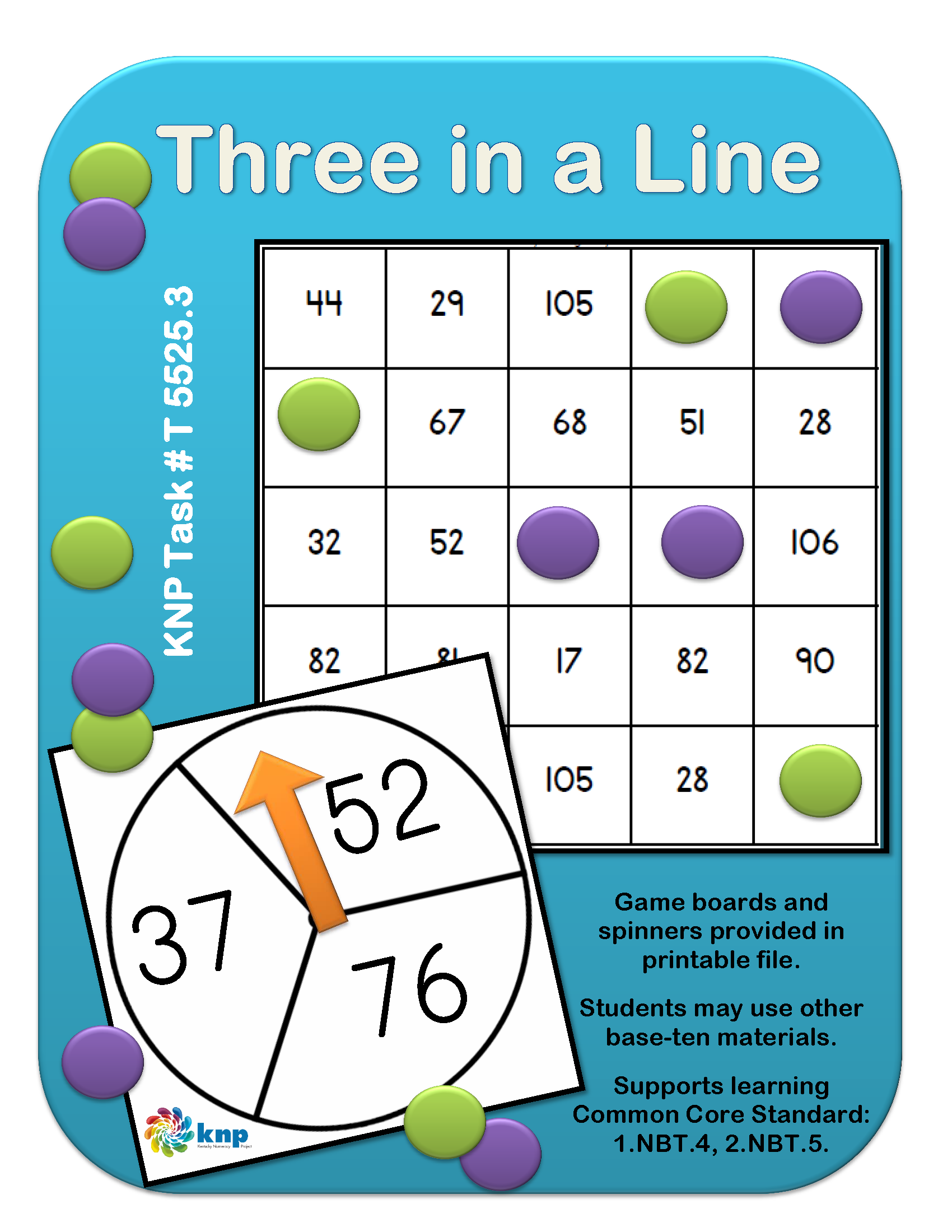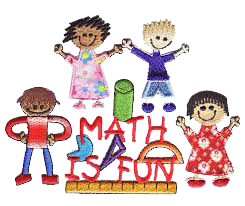“Three in a Line”
KNPIG ID #T 5525.2
What's this activity about?
Three in a Line is a game that uses materials you can find at home and a few printables to help your child work with groups of ten in order to add and subtract. Using markers, a spinner and the game board, the goal is to be the first to get three answers in a horizontal, vertical or diagonal line. Your child will be practicing their addition and subtraction with one and two digit numbers by using bundles of ten. You will be working with numbers one through 100. The activity is constructed to be played starting with Game Board A and moving in order through Game Board G.
What materials do we need?
-Printable game board (see link)
-Printable spinner (see link), paperclip and pencil to use with spinner (if available you can use blank number blocks)
-bundles of ten popsicle sticks or straws wrapped with a string or hair elastic game pieces such as checkers pieces or small -squares of colored paper to use as
-Game pieces (if available you can use a math rack or ten frame cards)
-Game Boards A-G, you can print just one set at a time (in order) or all of them! Just make sure when the spinner sheet is printed, it matches the Game Board being used.

How do we play?
- Each player gets a Game Board A and several covers or game pieces
- On your turn, you will:
- spin both spinners for Game A
- find the sum or difference as indicated by the spinners
- mark that number on your game board with a counter or a marker
- You may use bundles of straws or sticks to help you think about the problem.
- The first person to cover three numbers in a line wins. The line can be horizontal, vertical or diagonal.
- Repeat steps 1 through 4 for Game Boards B through G (in order).
Where’s the Math?
There is a lot of math in this game that goes along with what kids are learning in school. Kids are learning how to use groups of ten to make adding and subtracting one and two digit numbers easier. They are learning to understand the importance of place value when working with larger numbers. Sometimes it is necessary to make new bundles of ten or break up bundles of ten in order to solve problems. Practicing with a variety of different addition and subtraction situations will help your child gain a better understanding of place value.
Things to Think About:
As you play this with kids, remember to BE PATIENT. Sometimes it’s hard not to help them along if they are struggling. Giving children time to think will help them develop more critical thinking skills and deeper understanding. Instead of telling them the answer, help them by using manipulatives or other strategies to figure out the answer.
Begin with Game Board A and ask questions that will encourage them to use different strategies. If they spin a 36, ask them what it might look like using the bundles. You can help them model this. If they get a subtraction for the second number, you might ask them what to do with that number – “You spun minus 10. How can you show minus 10 with the bundles?” If they get addition, you might ask –“You spun plus 10. How can you show adding 10 to 36 with your bundles?” Remind them the straws are in groups of tens as they are working. You could also have the child use pencil and paper to make groups if they are not comfortable using bundles. Some children prefer to work with pencil and paper. Encourage them to make groups of ten. They can skip the bundles when they are able to explain what they would do if they were using the bundles. This is an advanced strategy and indicates the child is ready to move to the next game board.
It will benefit your child to progress through the Game Boards in order because Game Board A is the easiest and Game Board G is the hardest. You and your child can gauge when they are ready to move on to a more difficult game board. Make sure the materials are still available for them to use. By the time you have reached the more difficult boards the game play will be a breeze and the child can focus all their energy onto using different math strategies to get solutions.
Feedback
Send us your thoughts and ideas about these activities. Email the KCM

